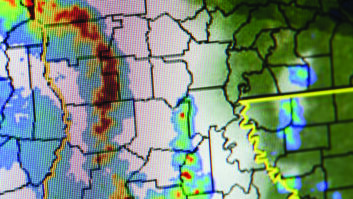H. Robert Schroeder, N2HX, iscommunications and warning officer for the New Jersey Office of Emergency Management. This commentary is part of RW’s continuing coverage of the changes in EAS.
I applaud FCC and FEMA for testing the EAN system. The true purpose of a test isn’t to gloat over its success, but to learn from how it fails.

I admit that I’m not privy to how the old EAN distribution system fed the PEP stations. Being Cold War-related, much of that was kept confidential for obvious reasons.
What apparently happened on the day of the test was that FCC/FEMA freelanced and added other procedures that were not part of the original system. Specifically, I refer to the ad hoc conference call that was set up to supplement the original system.
This was a bad idea for at least three reasons.
First, during a real attack (to use the original vernacular), how are you going to have time to contact each PEP station and set up a conference bridge?
Second, setting up any kind of call via the public switched network (a.k.a. the POTS lines) is prone to failure simply because it IS on the POTS system.
Third, a conventional conference bridge is a full-duplex circuit. This means that if one of the parties on the conference accidentally or on purpose induces extraneous audio on the line (as what occurred during the test), it will obliterate the EAN message.
Backup
My recommendation would be to emulate the old radio network telco lines but with several improvements.
First, have not one but two one-way network feeds from the White House, a primary and an alternate circuit.
Second, keep a constant tone on the line at a given reference level so that all PEP stations can periodically assure that the lines are intact and that the incoming level is correct.
Third, provide a separate “orderwire” party line circuit so that all PEP stations have the ability to communicate with Washington as a means of coordination and authentication (similar to the national NAWAS circuit).
I observed that there was insufficient and often conflicting information coming from FCC/FEMA prior to the test. One FEMA source told me that the FEMA XM satellite receivers would be receiving the national test. I heard nothing on my FEMA receiver during the test other than the usual voice announcements.
As New Jersey’s warning officer, I know it is a challenge to keep the public engaged and informed about emergencies, especially when citizens are ”off the grid” and not listening to or watching a broadcast source. As a people, we Americans believe ourselves to be so technically savvy and well informed, yet we are painfully uninformed.
What’s more, there is a certain segment of people who do not want their pleasure and entertainment interrupted to bring them emergency information. Even though it may hearken back to the Eisenhower days of the “duck and cover” public service ads, Americans need to be informed where and how they can access reliable emergency information.
Regular tests
In my opinion, the EAN system should be tested annually. However, such testing should not commence until the technical glitches have been corrected and the distribution system to the PEP stations improved. Would the system have worked 20 or 30 years ago?
Lastly, the White House should not be afraid to use the EAN system. It should have been used on 9/11, but it was not. An attack on our nation is an attack no matter where it comes from. Isn’t that why the EAN system was created in the first place?
(As a point of information, the National Warning System was not used on 9/11 but should have been. The NAWAS phone in my office remained silent the entire day on 9/11. That was a glaring omission on the government’s part and was never brought out in the 9/11 commission report.)
RW welcomes other points of view. Post a comment below or send a letter to the editor at [email protected].










